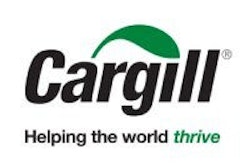
When it comes to high-performing pavements that meet the ever-growing needs of the traveling public, asset owners know they can’t continue building roads the way they always have if they want to deliver projects that provide long-term quality of life benefits for all users.
For this reason, forward-thinking states and local agencies are taking it upon themselves to push the limits of pavement mix design to create roads that are not only less expensive to build, but will also last longer. Select DOTs and agencies across the country are implementing innovative design practices to help build sustainable pavements that not only keep their costs down, but also increase pavement performance.
What is a Sustainable Pavement?
There are more than 4 million miles of public roads in the United States. In 2017, over 3 trillion vehicle miles traveled (VMT) were logged over those roadways, consuming more than 169 billion gallons of fuel in the process. In 2016 alone, state and local governments spent $175 billion, or 6 percent of direct general spending, on highways and roads. Highways and roads were the sixth-largest source of direct general spending at the state and local level in 2016 and have been since 1996.
As we know, pavement design and construction are an integral part of this roadway network as they provide a smooth and durable all-weather traveling surface that benefits a range of vehicles and users. Given their key role and widespread use, there is a unique opportunity to improve the sustainability of pavement structures with the potential to deliver tremendous environmental, social, performance and economic benefits.
According to the Federal Highway Administration (FHWA) a sustainable pavement therefore is one that takes in to account the entire lifecycle of the pavement which includes materials, design, construction, use, maintenance and preservation, and end of life. During each phase of life for the pavement, the industry has an opportunity to improve the sustainability of that structure.
Taking these life cycle phases of the pavement into consideration, all pavement types can be designed to be more sustainable by considering costs, environmental impacts and social needs together.
States Putting Sustainable Pavements to Work
All stakeholders in the pavement community—from owner/agencies to designers, and from material and additive suppliers to contractors and consultants—are embracing the need to adopt more sustainable practices in all aspects of their work.
Because of this push for more sustainable pavements, many states and agencies are putting these practices to work proving that pavements can be both cost-effective and long-lasting when designed properly.
New Jersey, faced with a deteriorating transportation infrastructure, decreasing transportation funding and increasing traffic conditions began to implement a performance-based asphalt mixture design system for their “special asphalt mixtures” in 2006. Each of these performance-based mixtures is required to undergo performance testing during mix design, test strip and project construction phase to ensure the produced mixture achieves the desired performance for the specific pavement structure.
Three asphalt mixture performance test methods were utilized to test the New Jersey performance-based specification:
· Asphalt Pavement Analyzer, AASHTO T 340: Determining Rutting Susceptibility of Hot-Mix Asphalt Using the Asphalt Pavement Analyzer;
· Flexural Beam Fatigue, AASHTO T 321: Determining the Fatigue Life of Compacted Hot-Mix Asphalt Subjected to Repeated Flexural Bending; and
· Overlay Tester, Tex-248-F: Test Method for the Overlay Test.
Field performance data since then indicates that all mixtures performed exceptionally well, and in some cases performed better than conventional NJDOT asphalt mixtures. As the performance-based mixtures have become more widely accepted and the methodology of design and production becomes more efficient, NJDOT plans to implement some form of performance-based specifications for all asphalt mixtures.
In 2016, the City of Chicago started to require the use of more warm mix asphalt (WMA) in their pavement design and construction projects between November 1 and May 1 each year. The use of WMA production methods use temperatures 30 to 120°F lower than traditional hot mix asphalt (HMA). Because less energy is needed to heat the asphalt mix, less fuel is needed to produce WMA. Fuel consumption during WMA manufacturing is typically reduced by 20 percent.
The standard specification from the City of Chicago indicated that contractors shall perform a verification of their existing approved mix design with the warm mix additive incorporated at the manufacturers recommended dosage.
The city says verification testing, at optimum AC, shall be comprised of one Gmb and one Gmm sample. The voids shall be within 0.5% of the design value. A Hamburg test (AASHTO T 324) will be required and shall be in accordance with the “HMA Mix Design Requirements (D-1)” Special Provision.
In addition to lowering costs using WMA, the Illinois Tollway has also been serving as a testbed for engineers and industry leaders throughout its current 15-year, $14 billion Move Illinois Capital Program. Illinois Tollway staff and leadership have embraced the philosophy that innovations can lead to cost savings and environmental stewardship while providing equal or improved pavement performance.
With no federal or state funding, and resources independent from the Illinois DOT, the Illinois Tollway has leveraged its latitude for innovation by quickly taking advantage of new products and innovations aimed at testing and implementing product performance.
On multiple preservation and system-wide improvement projects in 2018, the Illinois Tollway provided contractors with a variety of choices for their asphalt mixture ingredients. Contractors had a wide range of tools to choose from including binder types, binder modifiers, rejuvenators, warm-mix asphalt technologies, increased asphalt binder replacement and a wider range of permissible aggregates.
Rejuvenators are the next item to be evaluated by the Illinois Tollway. The Tollway will be allowing the use of rejuvenators on the shoulders as long as they meet current performance standards for Hamburg and DCT, as well as a recovered asphalt binder requirement. Asphalt binders can be extracted and recovered from the mixture designs and evaluated for asphalt binder properties. This provides critical information about the actual performance grade (PG) of the asphalt mix design, which becomes even more important with the increased use of recycled materials.
Not just big players like the state of Illinois and the NJDOT are working towards innovation in their pavement design. The city of Janesville, WI, which owns and maintains around 330 miles of paved streets, is also putting sustainable practices to work. Starting at the beginning of 2020, the city has chosen to increase their RAP content as well as allow the use of additives in their mix designs.
Additives for use must be listed and approved on the AASHTO National Transportation Product Evaluation Program (NTPEP) or the Illinois Tollway Asphalt Modifier Approved Products List. Any use of additives must be listed on the submitted mix design.
The city will also test new mix designs for performance. On the first day of production using these mixes, the city says they will obtain materials for mix design verification.
Verification testing may include any of the following:
1. Asphalt Content
2. Gradation
3. Volumetrics
4. DCT
5. IFIT
6. Hamburg
7. PG Grade of the Recovered Binder.
The city says they also encourage the contractor to obtain and test material on the first day of production as well.
The concept of sustainable pavements and green construction practices is not going away. As states continue to design pavements that are more innovative, they will also seek designs that will extend the pavement life, making their roads even more environmentally friendly. The asphalt industry should be embracing these changes and continually investigating technologies at each phase of the pavement lifecycle that can help reach these sustainability goals. While some states and agencies have made strides to better there pavement design and construction to reflect these goals, there is still much work to be done.




















